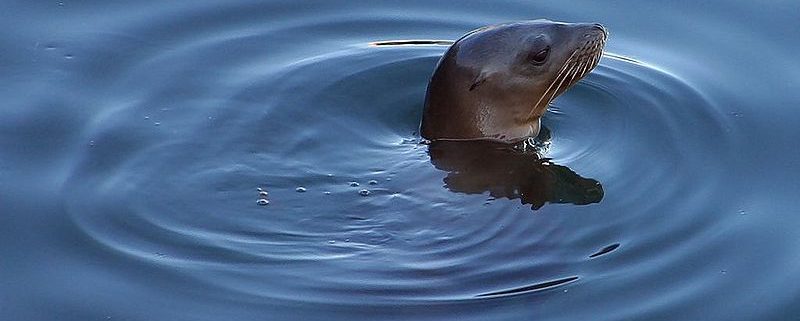Novel use of epidemiological models to control the spread of unwanted behaviors in marine mammals
By Cameron Perry, SRC intern
Animal behavior is often learned or passed down through social interactions with other individuals. However, sometimes these socially transmitted behaviors increase exploitation of human resources, which may threaten human safety and economic livelihood (Schakner et al., 2016). Schakner et al. (2016) examined a case study where California sea lions (Zalophus californianus) discovered salmonids that had migrated up the Columbia River to the fish ladders located at the Bonneville Dam. Sea lions began foraging at the dam and increased the mortality of the Columbia River’s salmon and steelhead runs, 13 of which are listed under the Endangered Species Act (Schakner et al., 2016). The mouth of the Columbia River is home to tens of thousands migratory male California sea lions, however, the number of individuals foraging at the Bonneville dam began to sharply increase in 2002. This rapid increase in foraging was attributed to social learning and, in order to protect the endangered salmonids at the Dam, a culling program was established in 2008.
![Study area for the case study which shows the Bonneville Dam and the East Mooring Basin where the males aggregate [Schakner et al., 2016]](https://sharkresearch.rsmas.miami.edu/wp-content/uploads/2017/04/Figure-1-SRC-300x112.png)
Study area for the case study which shows the Bonneville Dam and the East Mooring Basin where the males aggregate [Schakner et al., 2016]
![A California sea lion (Zalophus californianus) goes for a swim [Wikipedia Commons]](https://sharkresearch.rsmas.miami.edu/wp-content/uploads/2017/04/Figure-2-SRC-300x225.jpg)
A California sea lion (Zalophus californianus) goes for a swim [Wikipedia Commons]
The authors hope that the Bonneville Dam case study could serve as an example what should be done in similar situations. They provided a novel synthesis of disease ecology models in social transmission and spread of behaviors in wildlife. Animal behaviors can rapidly spread through a population like an infectious disease. Social transmission of behaviors, like infectious diseases, can be managed through early intervention to reduce their spread and reach through a population.
Works cited
Schakner, Zachary A, Michael G Buhnerkempe, Mathew J Tennis, Robert J Stansell, Bjorn K van der Leeuw, James O Lloyd-Smith, and Daniel T Blumstein. 2016. “Epidemiological models to control the spread of information in marine mammals.” Proc. R. Soc. B.




Leave a Reply
Want to join the discussion?Feel free to contribute!